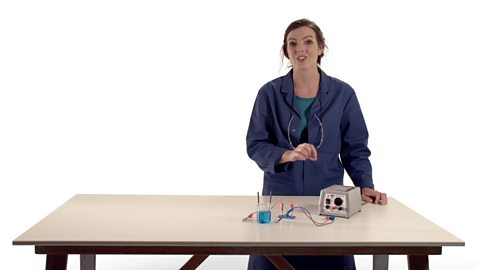Investigating exothermic and endothermic reactions
Speaker one Have you ever had a bump or a sprain and needed a cold compress?
Speaker two Yes, all the time. Now, some cold packs use a chemical reaction to absorb heat.
This is an example of something known as an endothermic reaction. And have you ever felt the heat from a candle?
Speaker one Yes.
Speaker two Well, that is an exothermic reaction.
Speaker one Now, what do these terms actually mean?
Speaker two Oh, let me tell you!
An exothermic process transfers energy from the reacting molecules to the surroundings, causing the temperature over the immediate environment to rise or get hotter.
Speaker one Now, chemical reactions which take energy FROM the surroundings are called endothermic reactions. This energy transfer makes the environment cooler.
Speaker two You can tell the difference between an endothermic and exothermic reaction by measuring the temperature changes which occur during the reaction.
Speaker one We’re going to investigate how changing the volume of one of the reactants affects the maximum temperature reached during an exothermic reaction between hydrochloric acid and sodium hydroxide.
Speaker two Now, our independent variable will be the volume of sodium hydroxide. The volume of hydrochloric acid will be one of our control variables. We’re going to be measuring the maximum temperature reached during the reaction, which will be our dependent variable.
Speaker one This is the equipment you’ll need. Now, do pause the video and take a look.
Speaker two Now remember, because we’re working with acids and alkalis we’re going to need to put safety gloves and safety specs on.
Speaker one Now, we’re working with an insulated cup because we want to keep the heat given out in the reaction to be held in the reaction vessel so we can measure it. The cup is a great thermal insulator, so it will minimise the heat loss to the surrounding areas. The lid also helps to reduce heat loss.
Speaker two So, measure 30cm³ of hydrochloric acid. Pour it into the insulated cup and add the thermometer. Write down the starting temperature of the acid. Keeping the starting temperature of the reaction constant is another one of our control variables. Add 5cm³ of sodium hydroxide into the measuring cylinder. Pour the sodium hydroxide into the hydrochloric acid and put the lid on. Now gently swirl the contents to distribute the heat. Watch the thermometer and note the highest temperature. I reckon we’ve hit the maximum, so for us there, that is 23 degrees.
Speaker one Just record the highest temperature each time on your table. Then clean and dry the insulating cup and the lid ready to repeat the experiment.
Speaker two We’re going to continue. We’re going to add 5cm³ more. Okay.
Speaker one Okay. I’ll swirl when you’re done.
Speaker two Go on, swirl.
Speaker one Swirl, swirl. I’m swirling, I’m swirling.
Speaker two It’s all heating up. I’d call that 25.
Speaker one Yep, I think it’s about 25.
Speaker two We’re then going to repeat the entire experiment two more times. This will allow us to identify and discard any anomalous results. We can then calculate the mean maximum temperature rise for each value of the independent variable. We can then plot a graph of our results.
Speaker one Initially, the more sodium hydroxide we add, the higher the maximum temperature. The sodium hydroxide is the limiting reactant at this point. So adding more of it, increases the chemical reaction taking place so more energy is transferred.
Speaker two Now you might have noticed that eventually we reach a limit to the maximum temperature. This is where we’ve added exactly the right amount of sodium hydroxide to react with all of the hydrochloric acid.
Speaker one If we continue to add more sodium hydroxide after this point, the same total amount of energy is released. However, the energy is now spread over a bigger volume of solution. So the maximum temperature reached starts to drop off.
Speaker two I don’t know why I did that. Remember, exothermic RELEASES energy. Energy EXITS and makes the surrounding warmer.
Speaker one And in an endothermic reaction, energy ENTERS, making the surrounding temperature decrease.
Description
A presenter-led science video investigating exothermic and endothermic reactions, with Dr Maggie Aderin-Pocock and Dr Alex Lathbridge.
Chemistry Practicals
Now playing video 2 of 5
- 4:57
